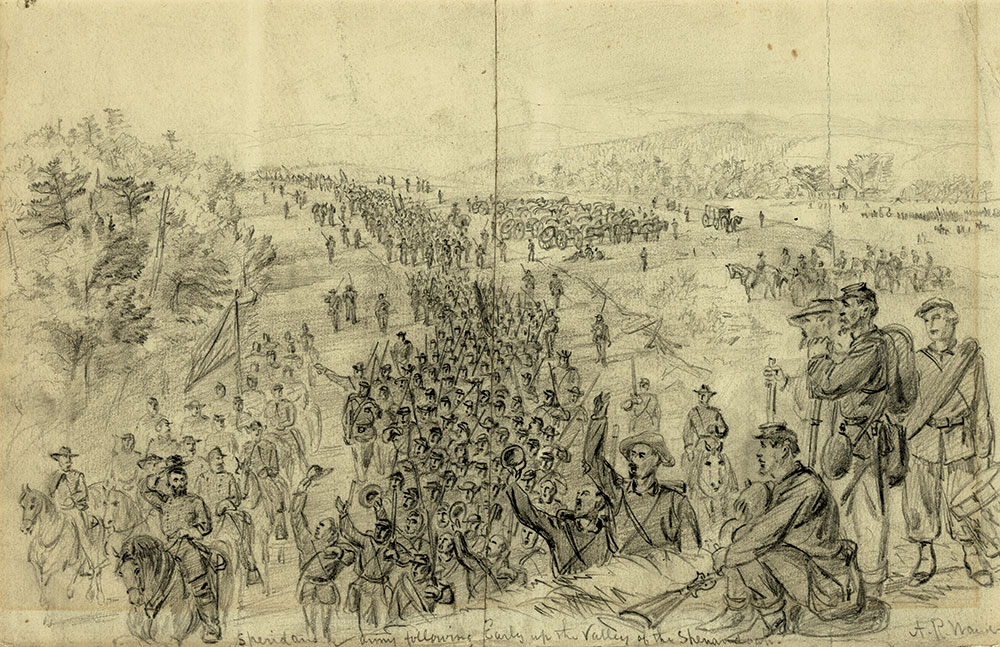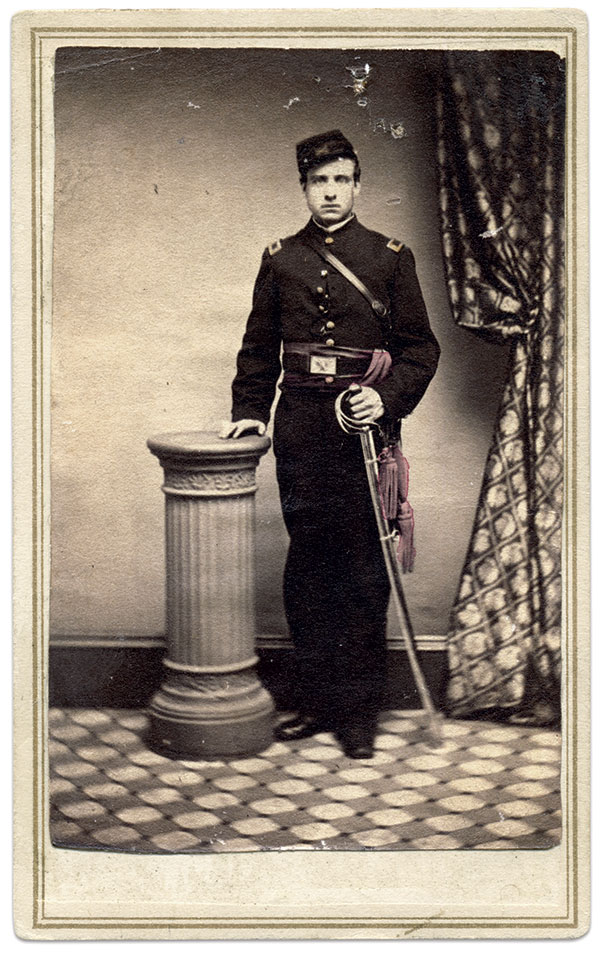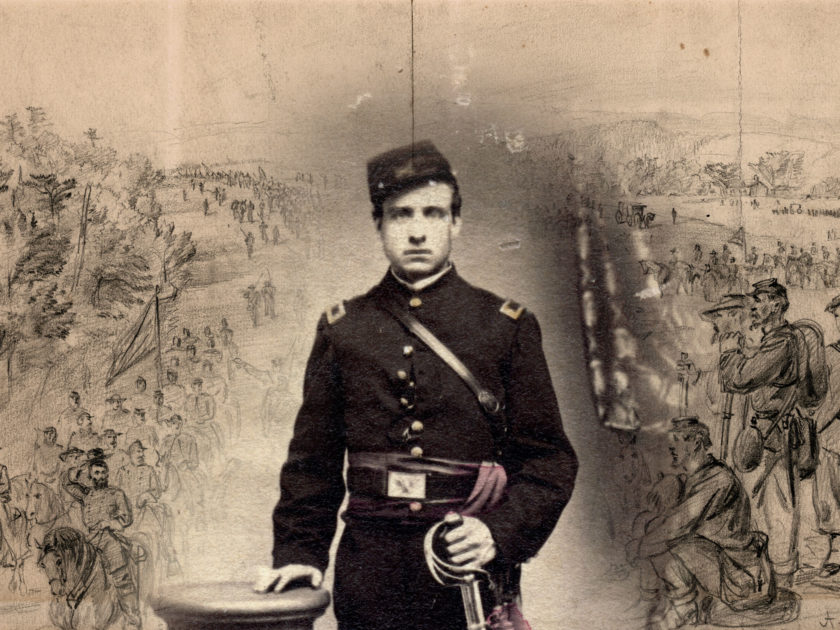The procession of cavalry officers and enlisted men that marched into the War Department one morning in March 1865 drew immediate attention. The sunburnt troopers, carrying 17 rebel flags they had captured in the Shenandoah Valley, made their way into the Secretary’s chamber to deliver their war trophies. The vast majority of banners, 15, had been taken in the recent Battle of Waynesboro, which had resulted in the destruction of Lt. Gen. Jubal Early’s Confederate army.
The august group receiving them included Secretary of War Edwin M. Stanton, Assistant Secretary Charles A. Dana, two senators and a host of others. Also present for the ceremony—Libbie Custer, representing her husband, in whose division these men served.

Stanton kicked off the event by reading aloud an introductory letter from Maj. Gen. Phil Sheridan. He commanded the cavalry corps that included Brig. Gen. George A. Custer’s force. Then, each man stepped up to narrate the story of how each came to capture a flag, and to receive a congratulatory handshake from Mrs. Custer.

One trooper who told his story was a son of Ireland who had earned his way from private to captain in two New York regiments, the 18th Infantry and 22nd Cavalry. Christopher C. Bruton’s story caught the attention of a newspaper reporter with the Washington Daily Morning Chronicle, which summarized his comments. Bruton, the reporter noted, “presented a Confederate national standard, also used as General Early’s headquarters flag. Captain Bruton stated that the flag had been presented to General Early in the morning of its capture; that he saw it passing over the mountains, and followed it nearly three miles before he was able to secure it.”
Bruton added that he believed his major, Hartwell T.B. Compson, killed or captured the color bearer. This statement suggests that Bruton picked the flag up off the ground after the bearer had been killed or took it from him after his capture.
Compson, in fact, led the troopers that day into to the War Department. He and Bruton received the Medal of Honor for the capture of Early’s colors, a Confederate Second National flag. All of the soldiers in attendance that day also received the nation’s highest honor.
Bruton did not enjoy his Medal for long. He died of consumption in 1867, and his remains were buried in Saint Patrick’s Cemetery in Caledonia, Mich., where some of his family had settled. In 2014, historian Ryan A. Conklin, author of The 18th New York Infantry in the Civil War: A History and Roster, discovered Bruton’s grave marker did not mention the Medal of Honor. On Memorial Day 2015, a new marker was installed to recognize his achievement.
The federal government returned the flag captured by Bruton and Maj. Compson to Virginia in 1906 as part of a continued effort to reunify the country in the war’s long wake.
VISIT OUR STORE to subscribe, renew a subscription, and more.

